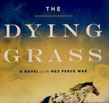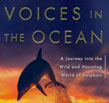 |
 |
01-02-09: : Gregory Lamberson's 'Johnny Gruesome' : Bloodcurdling Fun
Check out the totally- cool EC Comics-style cover of 'Johnny Gruesome' by Gregory Lamberson and you'll think you're getting something pretty and deliberately cheesy. So you'll get a rather large shock when you actually start reading the book and find that you're not seeing the red stuff flow on like, page three. In fact, Lamberson does an admirable job of creating a set of B-movie characters you can care about. At least, until the inevitable bloodbath starts.
The setup is indeed EC-simple. Johnny Grissom is the long-haired Gothish dude who drives the Deathmobile in your high school, wherever that may be. Anytown Gods-Damned US-Fuckin'-A. Now, every Johnny has to have an Eric, the geeky dweeb he saves he saves because, while Johnny has a heart full of hate, he does indeed have a heart. Not that it keeps beating for very long! Kill Johnny (circumstances left for the reader to experience), bring him back from the light tunnel ("'Forget your anger.' KILL THEM! 'You'll damn your soul...' KILL! '...for eternity...' Moving backwards, the silhouettes retreat. FUCK OFF, CHRISTIAN SOLDIERS!") then wait. But not for long. There'll be bodies in the hallway, heads in lockers and worse to come.
Jeff Strand's introduction tells us that 'Johnny Gruesome' started its life of death as a screenplay, but it's not at all obvious as you read it. In fact, it seems a bit too literate for a screenplay, too fleshed-out, but readers aren't likely to hold that against it. The character work is as strong as the gore, and in a similar, broad style. This makes the gore a lot more fun, as do the illustrations, apparently also by Lamberson. I especially enjoyed the Johnny Gruesome portrait shot, which is surprisingly classy.
'Johnny Gruesome,' like Slime City, probably has a somewhat limited audience, but it's not the exact same audience that enjoys low-budget movies with gross-out special effects. Those enamored of the Slime City style may be a tad disappointed in all the emphasis on characters, though they'll no doubt like both the illos and what happens to the characters. The EC horror fans will eat this one up, even if they gratuitously puke it all out afterwards. And shockingly, regular horror fans may find themselves enchanted, if that's the right word, with a novel that while filled with what many might think of as filth, is really quite a clean and tidy little tale of toe-tapping terror.
|
|
01-01-09: : Year of 'The Poison Ape' by Arimasa Osawa : Shinjuku Sharks
I generally don't advocate starting a series on book two, but in this case, I'm working with what I've got, and that's 'The Poison Ape' (Vertical Inc ; December 16, 2008 ; $15.95) by Arimasa Osawa. So here's the back story. Osawa has been cranking out these police procedurals for some sixteen years in Japan, with nine novels to show for it. We're at stage two here, and by my estimation this is a pretty decent bit of straightforward, gritty fun.
The setup is pretty classic. Inspector Samejima is the lone good guy in a crime-ridden, Yakuza-ruled bad part of town, the Shinjuku ward of Tokyo. Everyone else deals with the Yakuza, but Samejima does not, which brings his upward-arc to a grinding halt. He gets the crap cases, like trying to take down street dealers of paint thinner. Paint thinner? Well, hell, maybe it beats meth, I don't know. "'That stuff you sell destroys people. It messes them up. They start fires, they beat their parents to death. Ever think of that? Thinner, uppers, they're all the same.'" Samejima has a definite Joe Friday vibe going, but he's going to need to be a lot tougher than that to deal with The Poison Ape.
The titular primate is a hit man who is making life even more unsafe for the already rattled denizens of Shinjuku. Gangs, syndicated and an exotically structured criminal underworld are going about the business of killing one another and ordering the delivery of rivals' eyeballs. From Taiwan to LA, pursuit and anonymity make the Poison Ape eye of a storm of violence. Samejima may find himself protecting the very people he wants to put away.
'The Poison Ape' is not a subtle book. It's a blunt, fast read that wears its violence on its sleeve. The translation seems a bit clunky, but the milieu is vividly rendered. It's one of those books that readers will see as a black and white movie in their heads. There's a lively, in-your-face feel to the narrative. Everything's on the surface. It's a fist to your face in a dark alley. Welcome to the New Year. Year of the Poison Ape. Good luck with that.
|
|
12-31-08: : Peter Wild Hears 'Noise: Fiction Inspired by Sonic Youth' : Turned to 21
Music can inspire us to do a lot of crazy things, including write stories. Peter Wild harnessed the music of Sonic Youth and found twenty-one writers to channel that music into fiction, with the result being 'Noise: Fiction Inspired by Sonic Youth' (Harper Perennial / Harper Collins ; January 6, 2009 ; $13.95). The concept is simple; take the title of a Sonic Youth song and write a story with that title. The results are just as varied, just as strange and just as powerful as their namesakes. Imagine "A Child's Guide to Sonic Youth" Best-Of CD re-done as short stories. That's this book.
The names within will bring some readers to a halt. You have Mary Gaitskill, J. Robert Lennon, Matt Thorne and Jess Walters — all writers with lots of novels to their name. You have blogger Eileen Myles and Emily Carter Roiphe, whose first novel, 'Glory Goes and Gets Some,' is out from the delightful UK publisher Serpent's Tail. Hiag Akmakjian is a novelist, translator and photographer. You get the idea; there's a wealth of variety employed in the service of edgy, interesting short fiction. The stories are on the shorter side, and are the perfect reading material for when you need to have your world, inner or outer, blown up.
Now is probably a good time to mention a major draw for readers — a new short story by Katherine Dunn. There are names that stand in legend, as the author of the iconic 'Geek Love,' Dunn's is surely at the top of the list. It's been almost twenty years since that novel came out and scraped our minds across the harsh surfaces of a world few could manage to glimpse at without flinching. Rumors of new work send a thrill now and again, but this is the real thing, and unmistakably Dunn; crisp, surreal and disturbing. Dunn is stellar find for this already appealing anthology. That name alone may draw a lot of readers and they'll be happy they heard the strains of a familiar song.
|
|
12-30-08: :Eclipse Two : All New Fiction
Master anthologist Terry Carr, who was co-editing with Donald A. Wollheim, the world-changing (for me, at least) 'World's Best Science Fiction' series (starting in 1965), took up Knight's challenge and started his own series, Universe, which ran annually from 1971 through 1987. With Orbit and Universe, science fiction showed the literary world that original short(ish) fiction could be a viable platform for extended sales in hardcover and paperback form. There was really no equivalent.
But recently, we have seen some anthologies that seem to be reaching for the same goal. Time will tell whether the editors and publishers have the stick-to-it-iveness that Knight and Berkeley, or Carr and Ace managed. But the quality is certainly there – look no further than
'Eclipse 2' (Night Shade Books ; December 2008 ; $14.95) edited by Jonathan Strahan. From the cover image by Donato Giacola to the final words of the new story by Alastair Reynolds, 'Eclipse' echoes the hallowed weirdness that made the Orbit and Universe series so powerful. This is science fiction as the
incarnation of the new, the strange, the other. Friendly and well-written, yes, but obviously dangerous to reality as we know it.
Strahan, who edits the series, tells us that for him, "the pre-eminent thing is story." He's wide open after that, and it shows in even in this entry to the series, which he admits tilts more towards the science-fiction end of the spectrum. With writers like Alastair Reynolds and Karl Schroeder (whose new "Virga" universe story, "The Hero" opens the collection), that's a welcome tilt. (And note that very cool cover image, with echoes 2001: A Space Odyssey.) This is not to say youre getting all SF, not with Peter S. Beagle and Terry Dowling in the mix. I'm going to eschew the run-down method of talking about this book, because, I don't think my readers need that. I hope that it's enough to say that this is the sort of science fiction that pries the reader away from this world and into worlds where nobody is comfortable. The stories will grab and squeeze your perceptions of this world and the worlds they create. Sure they're all written now and they're all, in a sense, about now. But these are carefully shattered mirrors, put together in a manner to expose what is within the now, the viscera of our world. We like to think we're hands and faces and clothes and carefully combed hair. But most of us is not so pretty, though it is far more essential. If you could see yourself ranked by what organs are most important to your survival, your portrait might not be so appealing. But it would be ever so much more informative!
|
|
12-29-08: : William Bernhardt Solves 'Nemesis: The Final Case of Eliot Ness' : Torso Time
As the present becomes ever more like the past, the past becomes more interesting. With so many fictional and movie landmarks based on his life, who could be more relevant than Eliot Ness, a man who put away a murderer with tax law? We're looking at a whole cadre of corporate criminals with murder in our eyes, trying to think of a punishment that fits the crime of tanking the economy of not just this nation, but the whole world. Maybe we could take a cure from the man who committed the Torso murders.
William Bernhardt has written a bunch of very popular thrillers of the sort that simply don't do a lot for me. I'm sure theyre fine examples of their type. But in 'Nemesis: The Final Case of Eliot Ness,' Bernhardt takes his work to a time and setting that are themselves intrinsically interesting. Here's the windup, based as the movie voiceovers like to say, on TRUE EVENTS. In Cleveland, Ohio, 1935, Eliot Ness is winding it down a bit. Not everyone is pleased with putting Capone away for tax evasion, but it worked for Ness, and that's good enough for him. Ness is about to become the city's director of public safety, but there's a hazard that's hard to anticipate. That would be the man who is pulling a sort of Jack-the-Ripper-style series of murders that feature dissection as much as death. This is not making anyone feel safe, and Eliot Ness is the man for the job.
Sure, it's a great setup. How it plays out is what makes the book worth your valuable time. Bernhardt writes in a very stripped down prose that comes as close to non-fiction as you can while still writing a novel. It's really a very quick read, and not nearly so dense as historical fiction can be. He's researched the heck out of his subject and has the advantage of lots of forensic science that has come since, as well as that which was understood at the time. Readers who love the frisson of knowing more than the characters by virtue of knowledge that is common in this here modern age will really get a kick out this book. Bernhardt's style makes takes a complex era and makes it seem simple.
More than the ripping yarn that Bernhardt has in his hands, there's a real joy to read about that world and contemplate this one. This is obviously a book that could not have been written until now, because we finally have a bit of knowledge of what was going on then. We also have the advantage of having learned ABSOLUTELY NOTHING in the intervening years. We handed everything over to a bunch of fast-talking salesmen, bought the store and came home with empty pockets and a handful of magic beans. Too bad the entire world joined us and even more too bad that those beans are proving not be magic at all. If we could run the world on farts and prayers, we'd be in top shape. Instead we're in a new Depression and still handing over money to the folks who brought it about. No wonder we're interested in creepy murderers. At this point in the proceedings, we're thinking that Fitzgerald should take a cue from the Torso killer, and not Eliot Ness. That tax evasion deal probably wont work, and moreover, we want blood. This book offers fictional non-fictional blood, and that may keep readers happy. For a while.
|
|
|
 |
|
|
|




